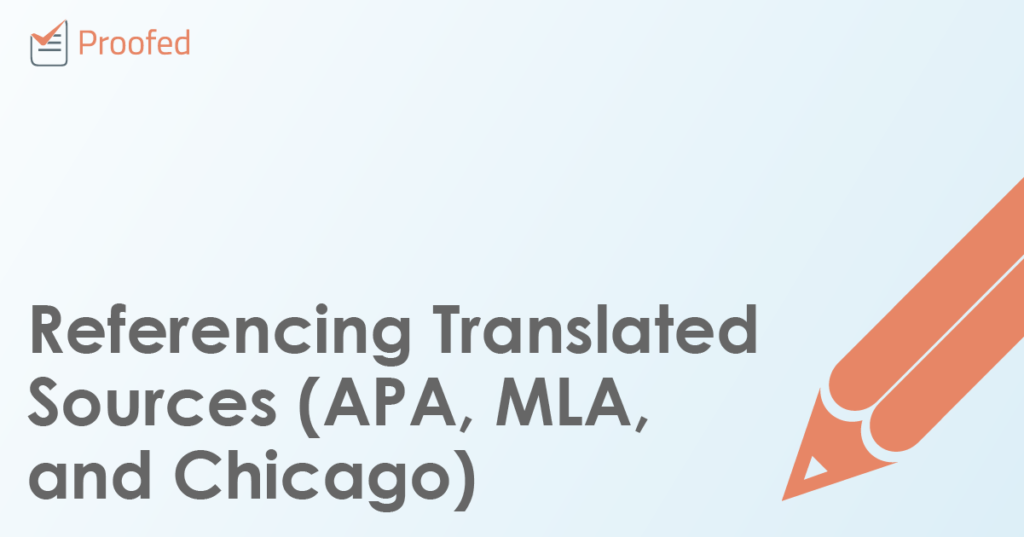Poor translators. Without them, we English speakers wouldn’t be able to read sources written in other languages. But are we grateful?
Not if the reference lists we see are anything to go by, as most people forget to include translators’ names. So, whether you’re reading Nietzsche, Proust, or Sun Tzu, join us for a quick look at how to reference translated sources in APA, MLA, and Chicago referencing.
APA Referencing
When citing a work in translation in APA referencing, you will need to give both the year it was originally published and the year it was published in translation:
Freud (1899/1976) was the first to note this phenomenon.
In the reference list, meanwhile, you will need to name the translator and “Trans.” after the title of the source, along with the original date of publication in parentheses at the end of the reference. For instance:
Freud, S. (1976). The interpretation of dreams (J. Strachey, Trans.). Penguin. (Original work published 1899)
(N.B. We’re using bold text to highlight the translator in these examples, but you don’t have to do this in your own work!)
MLA Referencing
For translated sources in an MLA Works Cited list, you should give the name of the translator after the words “Translated by” before the publication information:
Foucault, Michel. Discipline and Punish: The Birth of the Prison. Translated by Alan Sheridan, Penguin Books, 1977.
If you are focusing specifically on the translation of a text, you can even give the translator’s name in the first position:
Find this useful?
Subscribe to our newsletter and get writing tips from our editors straight to your inbox.
Sheridan, Alan, translator. Discipline and Punish: The Birth of the Prison. By Michel Foucault, Penguin Books, 1977.
However, you should only do this if you are primarily interested in the translation. This will usually be because you’re discussing two translations of a single source or writing about translation itself.
Chicago Referencing (Author–Date)
The format for translated sources in Chicago referencing depends on the referencing style you’re using. With author–date referencing, you only name the translator in the reference list. The format here is:
Foucault, Michel. 1977. Discipline and Punish: The Birth of the Prison. Translated by Alan Sheridan. London: Penguin Books.
Chicago Referencing (Footnotes and Bibliography)
With Chicago footnote citations, you need to name the translator in the first footnote and in the bibliography. For the footnote, the format to use is as follows:
1. Michel Foucault, Discipline and Punish: The Birth of the Prison, trans. Alan Sheridan (London: Penguin Books, 1977), 91–93.
Repeat citations use a shortened footnote, which doesn’t include the translator’s name. But the translator should be included in the bibliography at the end of the document. The information here is the same as in the first footnote, although the format is slightly different:
Foucault, Michel. Discipline and Punish: The Birth of the Prison. Translated by Alan Sheridan. London: Penguin Books, 1977.
Whichever system you’re using, though, remember to get your work checked by a professional before submitting it. This will make sure that all sources are referenced correctly!
